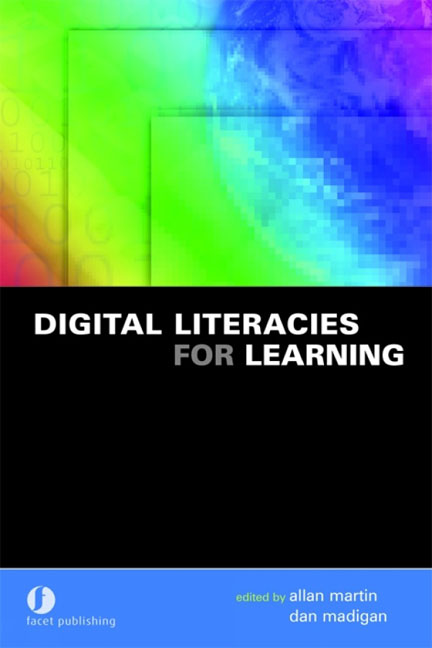Book contents
- Frontmatter
- Contents
- Dedication
- The contributors
- Foreword
- Preface
- Part I Literacies in the digital age
- Part II Enabling and supporting digital literacies
- 12 Supporting and enabling digital literacy in a global environment: preview of Part 2
- 13 A ‘dense symphony of the nation’: Cymru Ar-Lein and e-citizens and e-communities in Wales
- 14 The impact of information competencies on socio-economic development in Southern Hemisphere economies
- 15 Supporting students in e-learning
- 16 The information commons: a student-centred environment for IT and information literacy development
- 17 Socio-cultural approaches to literacy and subject knowledge development in learning management systems
- 18 Approaches to enabling digital literacies: successes and failures
- 19 Professional development and graduate students: approaches to technical and information competence
- 20 Windward in an asynchronous world: the Antiguan initiative, unanticipated pleasure of the distance learning revolution
- 21 A tale of two courses
- Index
15 - Supporting students in e-learning
from Part II - Enabling and supporting digital literacies
Published online by Cambridge University Press: 08 June 2018
- Frontmatter
- Contents
- Dedication
- The contributors
- Foreword
- Preface
- Part I Literacies in the digital age
- Part II Enabling and supporting digital literacies
- 12 Supporting and enabling digital literacy in a global environment: preview of Part 2
- 13 A ‘dense symphony of the nation’: Cymru Ar-Lein and e-citizens and e-communities in Wales
- 14 The impact of information competencies on socio-economic development in Southern Hemisphere economies
- 15 Supporting students in e-learning
- 16 The information commons: a student-centred environment for IT and information literacy development
- 17 Socio-cultural approaches to literacy and subject knowledge development in learning management systems
- 18 Approaches to enabling digital literacies: successes and failures
- 19 Professional development and graduate students: approaches to technical and information competence
- 20 Windward in an asynchronous world: the Antiguan initiative, unanticipated pleasure of the distance learning revolution
- 21 A tale of two courses
- Index
Summary
Abstract
The majority of e-learning developments are supplementary to face-to-face teaching. This means that support issues, which are best planned as part of the curriculum design, are not fully developed. In addition it means the opportunities presented by e-learning are not fully exploited. This chapter considers the reasons why support should be integral to e-learning provision, how this impacts on support provision and how the use of learning-design models can help to inform student support and skills development.
Introduction
The use of e-learning encompasses a wide continuum of potential uses of learning technology. Phillips (2004) identifies four e-learning design dimensions: student–student interaction, student–teacher interaction, student–resource interaction and student–computer interaction. However e-learning is employed, it is critical that students are supported in the development of the e-learning skills required and provided with the appropriate support structures and opportunities.
The majority of e-learning developments have been supplementary to faceto- face delivery. This has meant that the full implications for supporting students in e-learning are not always fully considered. The reason for this is that supplementary applications are often ‘bolted-on’ to traditional forms of delivery. As a consequence e-learning is not considered in the design and delivery of the learning event.
This chapter is divided into four main sections. The first considers the reasons for supporting e-learning students. The second focuses on developing and supporting the skills that students require to become ‘e-learners’. The third considers how learning design and delivery models can inform planning to ensure appropriate support is in place and how this can be delivered through the curriculum. The fourth section considers the impact of e-learning on learning support services and how the support they provide needs to change.
Supporting students in e-learning
Simpson (2002) suggests student support is required for practical, theoretical and moral reasons. Building on Simpson's list for students studying via open and distance learning, the reasons it is important to make student support integral for e-learning are:
• Retention: flexible and distance learning provision has been particularly associated with high drop-out rates; based on experiences with traditional correspondence forms of distance learning. E-learning presents opportunities to improve retention through monitoring, tackling isolation and helping provide structure.
- Type
- Chapter
- Information
- Digital Literacies for Learning , pp. 162 - 171Publisher: FacetPrint publication year: 2006



